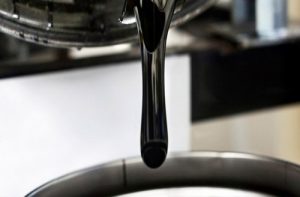
Description of Cutback Bitumen SC-70
Cutback bitumen SC-70 is a mixture of bitumen and kerosene, used to reduce the viscosity of bitumen in road pavements. This reduces the bitumen’s viscosity, aiding in the construction of seal coats. The cutback agent evaporates from the seal coat, becoming a negligible component a few months after application. However, if significant amounts remain, it may cause unwanted long-term softening effects.
Cutback asphalt is an asphalt cement with a solvent or distillate like gasoline, diesel fuel, kerosene, or naphtha added to make it liquid at ambient temperatures and improve its ability to coat aggregates. It can contain between 12 and 40% distillate. However, the high demand for distillates in energy applications and increasing air quality regulations have led to a decline in the use of cutback asphalt. SC liquid asphalt can be obtained by fluxing an asphalt cement with a less volatile distillate like gas oil. SC-70 and SC-250 grade cutback asphalts are similar to residual refinery products used as heavy fuel oils, also known as “road oils.”
Application of Cutback Bitumen SC-70
SC70 grade is used in the construction of roads and highways and for treatment for pavements in compliance with ASTM.SC30is also commonly used in spraying and for applications of mixing.
It is widely utilized in various construction applications due to its ease of use and effectiveness.
The primary uses is for priming road surfaces before asphalt paving. It enhances adhesion between layers, improving the overall structural integrity of the pavement.
Waterproofing Applications
SC-70’s waterproofing capabilities make it suitable for protecting structures such as bridges and parking decks, extending their lifespan by preventing water infiltration.
Filling Capillary Voids
Due to its low viscosity and excellent flow properties, SC-70 is ideal for filling capillary voids in asphalt surfaces, reducing moisture penetration and pavement deterioration risks.
Packaging and Safety Measures
SC-70 cutback bitumen is commonly packed on pallets in thick steel barrels to avoid leaks during transit and storage. Refer to Safety Data Sheets (SDS), remove ignition sources, use appropriate personal protective equipment (PPE), and avoid product contact with skin or water systems.
Specification
| property | Min | Max | Test method |
|---|---|---|---|
| Kinematic viscosity at 60°C [140°F], mm2/s | 70 | 140 | ASTM D2170 |
| Flashpoint(Cleveland open cup), °C [°F] | 60 | — | ASTM D92 |
| distillate test | |||
| Total distillate to 360°C [680°F], volume % | — | 35 | ASTM D402 |
| Solubility, % | 95 | — | ASTM D2024 |
| Kinematic viscosity on distillation residue at 60°C [140°F], mm2/s | 200 | 7000 | ASTM D2170 |
| Asphalt residue: | |||
| Residue of 100 penetration, % | 40 | — | ASTM D243 |
| Ductility of 100 penetration residue at 25°C [77°F], cm | 50 | — | ASTM D113 |
| Water, % | — | 0.5 | ASTM D95 |

